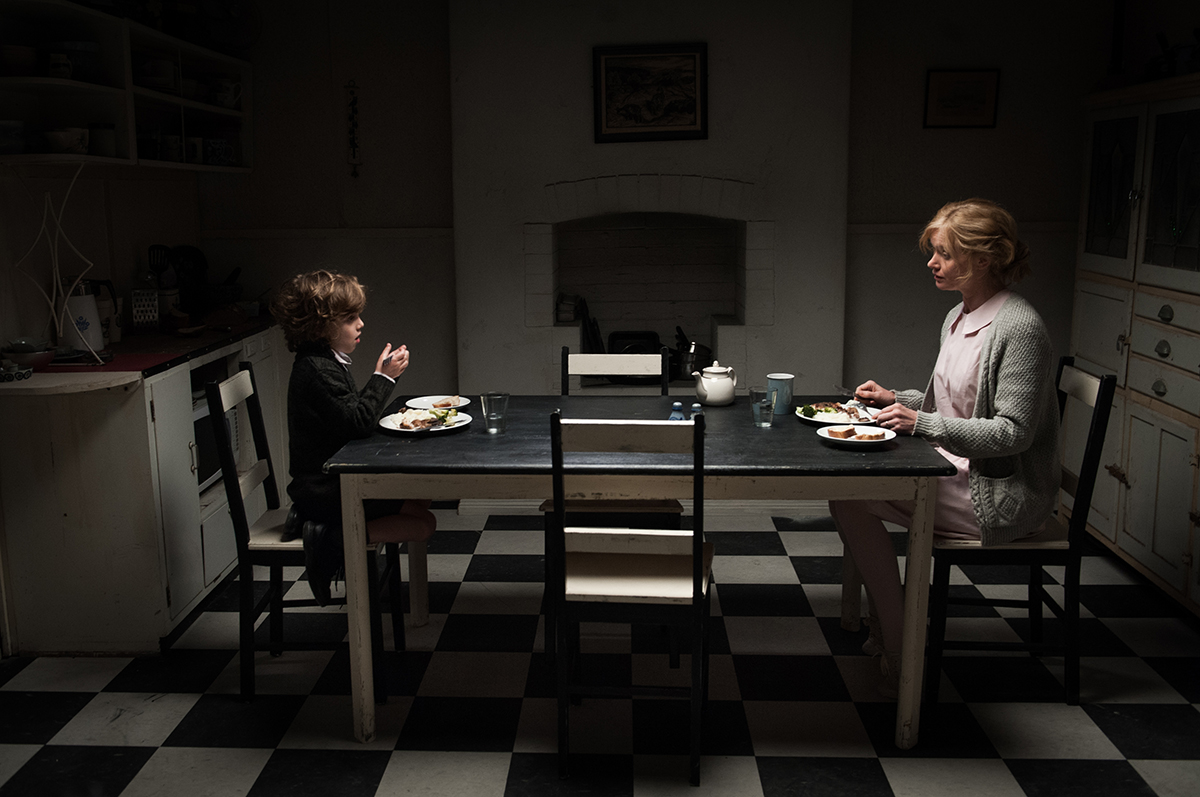
Horror in RealTime: lovely, dark and deep
Horror was my entrée into writing for RealTime. In fact, an interest in the horror genre opened the door for me to write film criticism in general. In 2010, seeking a change in direction from the customer service work I was doing to support my painting, I sent my CV around to various Australian arts publications with a request to be considered for proofreading positions. In my submission to independent film magazine Filmink, I added as an afterthought, “And if you ever need a horror reviewer…”
Filmink wasn’t hiring proofreaders, but the editor Erin Free wrote saying actually he could use a horror DVD reviewer — much to my amazement (it still gives me an imposterish frisson). RealTime in turn invited me to join its bi-monthly production days as a proofreader. Jumping forward a year or so, I was well into my side-career reviewing innumerable indie zombie and found-footage DVDs (as well as the occasional theatrical release) for Filmink, when RealTime’s designer and online producer, Gail Priest, generously suggested to the editors I might write every so often about my pet subject for RealTime.
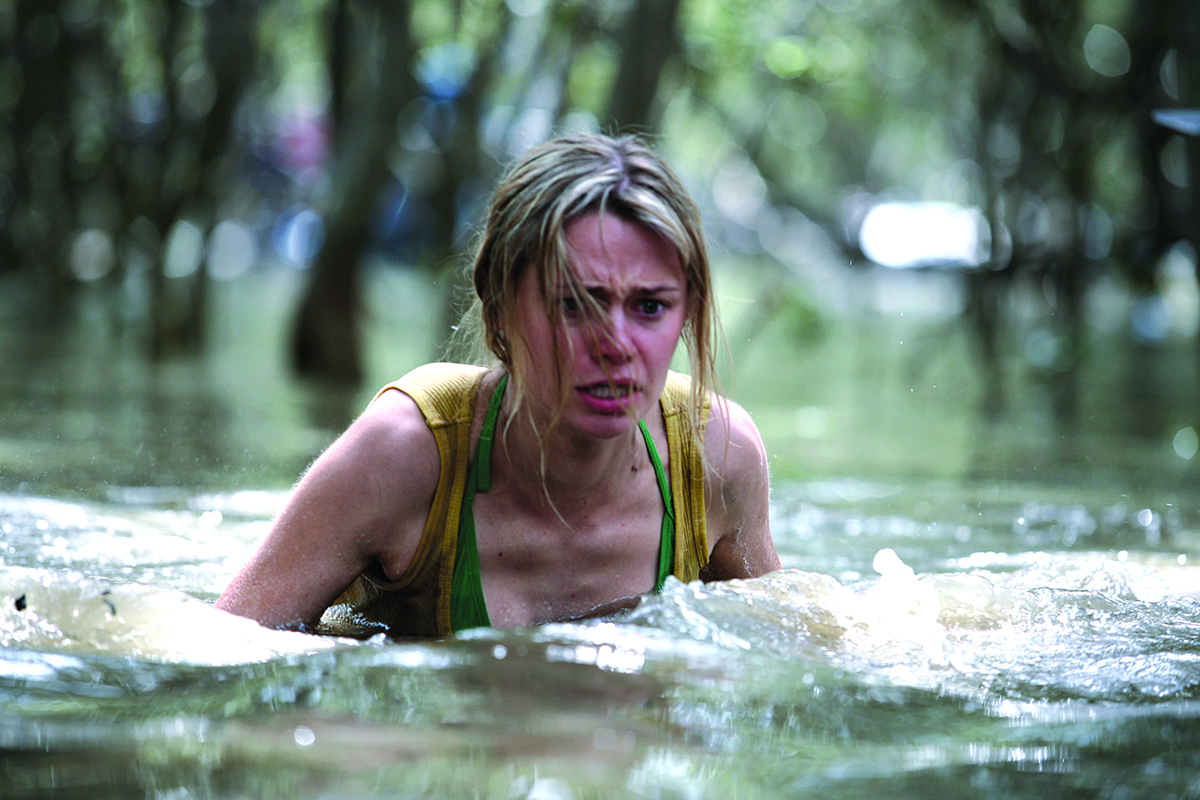
Black Water (2007)
Keith and Virginia then commissioned “The horror: how Australian?”, a substantial two-part account of the Australian horror film boom that had taken place over the first decade of the 21st century, ignited by the success of Saw (2004) and Wolf Creek (2005). The resulting article, a lot of fun to research, gave me the chance to sink my teeth into notable Australian-directed horror of the period and assess its ‘Australianness’ [Part 1; Part 2]. I watched and re-watched Saw, Wolf Creek, Andrew Traucki’s understated croc thriller Black Water (2007), Jody Dwyer’s cannibal-convict extravaganza Dying Breed (2008), the Spierig brothers’ zombie and vampire outings, and The Loved Ones (2009), Sean Byrne’s maniacal coming-of-age scenario.
If writing the same article now, I would have further probed the concept of ‘Australianness’ as it applied to each film. The two-part article is introductory and descriptive in form, an indicative but by no means exhaustive guide to the main players of the decade in question; but it was a solid beginning for me in considering the impact of socio-cultural conditions, identity and market forces upon cinema, especially in the context of a genre that had been dismissed, until very recently, by Australian film funding bodies.
So why my fascination with the horror genre? From a critical perspective, I love horror because it is such a fertile field, supplying endlessly varied material to think and write about. Fear is a shapeshifter, assuming numerous monstrous forms according to the traditions and cultures in which in arises, mirroring societal anxieties. I love analysing the cinematic language different filmmakers use to convey horror; to create that very particular sharpening of the senses conducive to dread, visceral repulsion or stark beauty (the awe-inspiring sublime). On a deeper, more personal level, horror draws me with its promise of a darkness rarely glimpsed; a hint of the Mysteries. My definition of horror is broad; probably too broad to be strictly accurate, though I consider the opposite opinion, that horror is inherently crude and vacuous, to be just as inaccurate. Horror is a mood, a physical feeling that transcends genre parameters.
The works appraised in The horror: how Australian? all fall uncontroversially into the horror bucket (though The Loved Ones messes with the feminine ‘princess’ narrative with insight and wit), but I’m alert for elements of horror in all sorts of films. In fact, while I still appreciate a straightforward horror flick, I’m increasingly drawn to films that take an experimental, lateral approach to horror, something that dovetailed with RealTime’s focus on risk-taking and innovation. Enter a singular horror film festival that embraces this kind of cinematic ambiguity. A revelatory experience of my RealTime years has been covering the remarkable Stranger With My Face International Film Festival in 2014, 2016 and 2017. Founded in 2012 by Hobart-based filmmakers Briony Kidd and Rebecca Thomson, the festival showcases women working in the highly male-dominated domain of horror and dark genre filmmaking; this in a field where women are already grossly underrepresented. (Note that none of the directors in my “The horror: how Australian?” is a woman.)
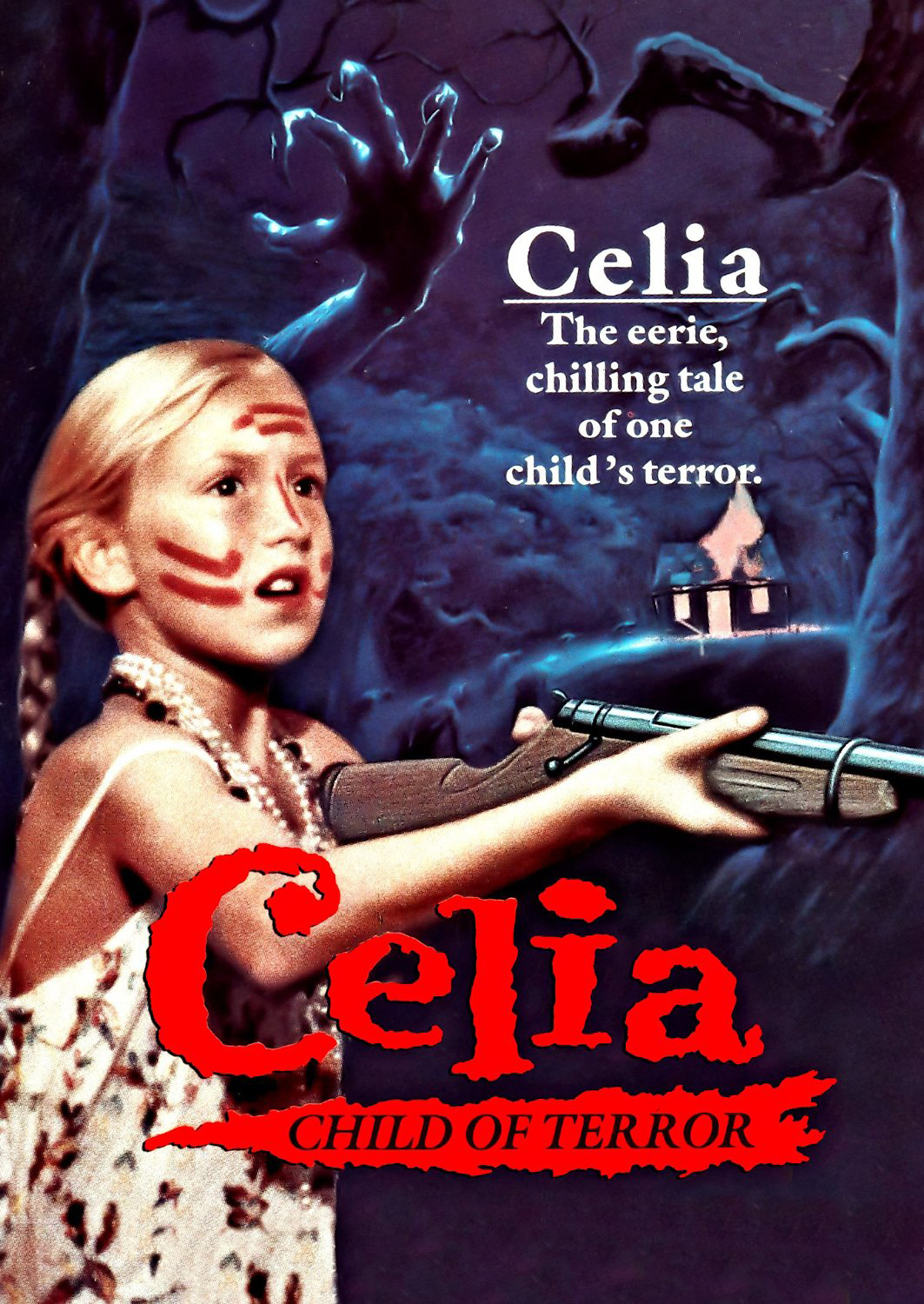
Promotional poster for Celia (1989)
Taking place at Salamanca Arts Centre in wintry Hobart’s historic quarter (fully living up to its Tasmanian Gothic promise), each festival ran for about four days, plunging participants into a stimulating miscellany of films, talks, play-readings and informal chat where horror was the order of the day: horror you weren’t used to seeing; horror that sprang from women’s experiences and perspectives; horror that forced you to reassess your assumptions of what it was; horror reconstituted, reappraised. It was a forum for recognising seminal works from past decades by writer-directors like Gaylene Preston (Mr Wrong, Perfect Strangers) and Ann Turner, and hearing them talk about their experiences as female filmmakers. Of Turner’s Celia (1988), I wrote:
“Celia is a remarkable evocation of an Australian childhood whose terrors, enmities and fantasies transform, in response to 1950s political paranoia, into something jagged and dangerous…Chris Neal’s chiming score contributes strongly to the sense of an eerie childhood underworld. The film’s detours into fantastic surrealism, gradually dovetailing with moments of real-world violence, led Kidd in her introduction to name Celia as a precursor to Peter Jackson’s Heavenly Creatures (1994).”
The subject of violence against women — a horror mainstay — was turned inside out in feature films Evangeline (Karen Lam, 2013) and Kept (Maki Mizui, 2014):
“It is hard not to be reminded, while watching Kept and Evangeline, how completely they upend conventional crime/horror narratives where an unformed female character is raped or murdered purely to drive the plot and further the character development of an often male protagonist and his antagonist. In Lam and Mizui’s scenarios, the viewer must remain with the victim; there is no escape from the suffering she endures, nor its consequences.”
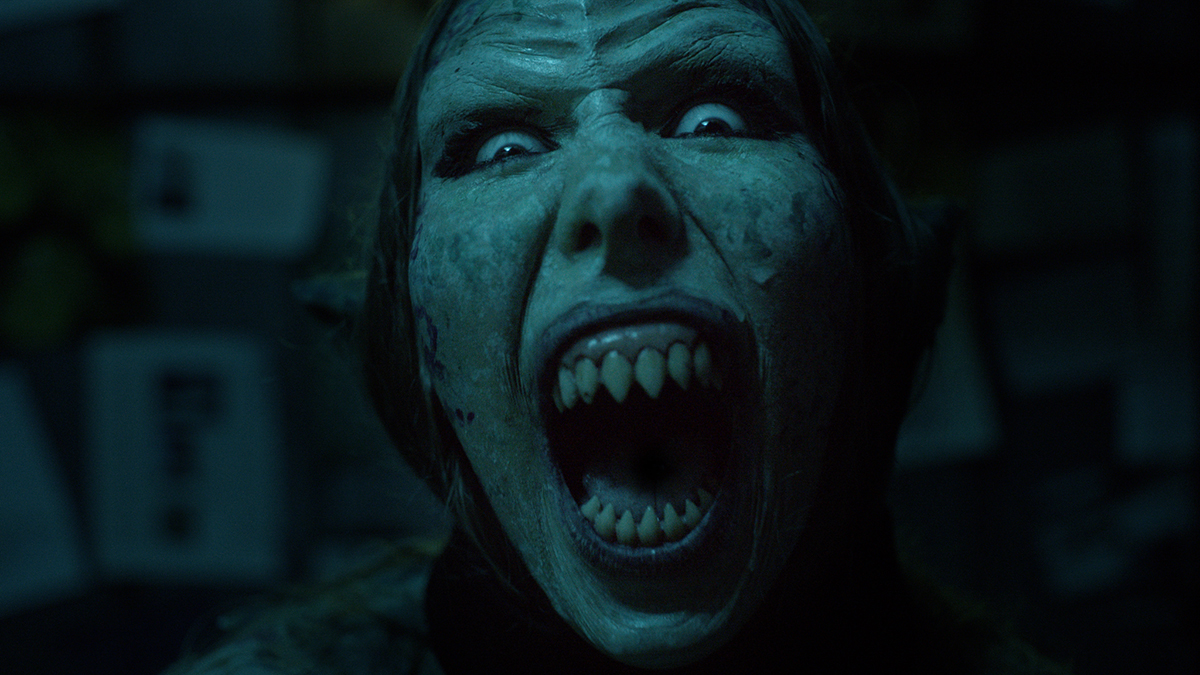
The Man Who Caught a Mermaid (2017)
SWMF introduced me to the quietly ominous films of Mattie Do, Laos’ first female director and maker of its first horror film, who spoke of “the pressures and pitfalls of making a horror film in Laos…”; Lucile Hadzihalilovic (Evolution, 2015, France); Anna Biller (The Love Witch, 2016, US); newcomer Elizabeth E Schuch (The Book of Birdie, 2017, UK); and Australians Donna McRae, Katrina Irawati Graham and Megan Riakos. Films in the 2017 festival shorts program made powerful political statements, including Luci Schroder’s grimly realistic Slapper (2017, Australia), Kaitlin Tinker’s unsettling modern fable, The Man Who Caught a Mermaid (Australia, 2017) and Kristy Guevara-Flanagan’s What Happened to Her? (USA, 2016), “a startling assemblage of film and TV clips demonstrating the sheer proliferation of nubile female dead bodies on our screens.”
Stranger With My Face further demonstrated to me the potential of the genre. As Briony Kidd said when I interviewed her for the 2014 festival, “I’m looking for films that have something to say. There’s an assumption that genre is mainly escapism but, to me, there’s so much scope in horror to be provocative or extreme or personal or original, so why wouldn’t you take advantage of that?”
Horror indeed gives filmmakers leeway to tussle with complex themes in a heightened, symbolic way. Before The Babadook (2014) attained international cult status, I interviewed the film’s director Jennifer Kent in some depth about the themes underlying this folkloric tale of a storybook monster tormenting a mother and child. Kent explained:
“Motherhood is a big taboo, isn’t it? It’s a thing we can’t really discuss in regards to not being good at it, or not wanting to do it sometimes, or not liking your child, sometimes even wanting to kill your child on certain days…that’s why I wanted to put it into the horror genre and not just a drama, and to take it further, and it’s worked in that it helps some women connect to it.”
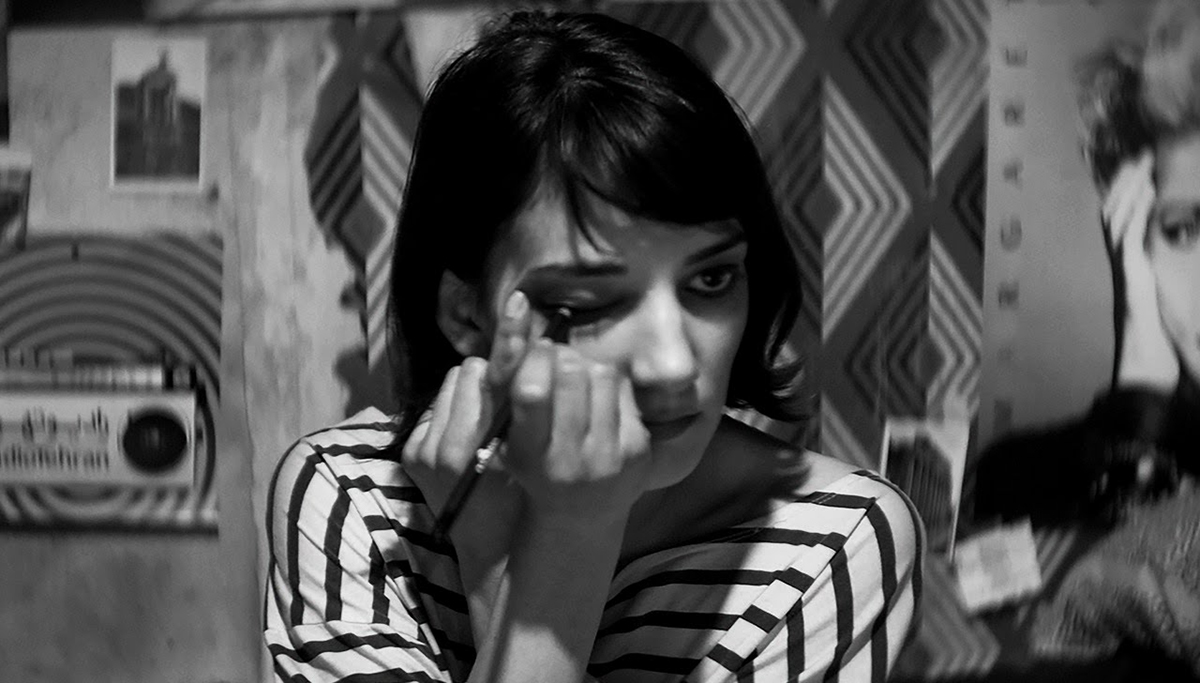
A Girl Walks Home Alone at Night (2014)
Some horror struck me with its sheer beauty. Watching Ana Lily Amirpour’s debut film A Girl Walks Home Alone at Night (2014) is to enter a “shadow world” that “floats in time as well as geographically,” through which characters move with silent-film intensity and the languid grace of dancers, the locus of fear pinpointed in the small, chadored, mesmeric person of the titular Girl. In It Follows (2014), “the viewer is enclosed in a big, sublime world encompassing unfathomable terrors,” pushed into an awed state of hypervigilance through the repeated use of exquisite figure-in-landscape longshots, crystalline close-ups of nature and 360-degree rotating shots, combined with Disasterpeace’s shimmering soundtrack.
Looking back on the past decade or so of reviewing, I appreciate the way Filmink taught me the knack of the short, rapid-fire review, with an eye to — sometimes jokily — assessing the film for fellow horror buffs. With RealTime, I could get expansive; slow down and contemplate the nuances and ambiguities. I had moved from a critical position of sitting outside the space of the film, to fully immersing myself and reporting back from within. I think I brought similar convictions to both publications — I’ve always had scant tolerance for the lazy deployment of violence against women, for example, but the years at RealTime increasingly opened my eyes to the depth and variety of women’s independent horror (and conversely to the ways in which standard horror falls short); I saw that horror can be done differently.
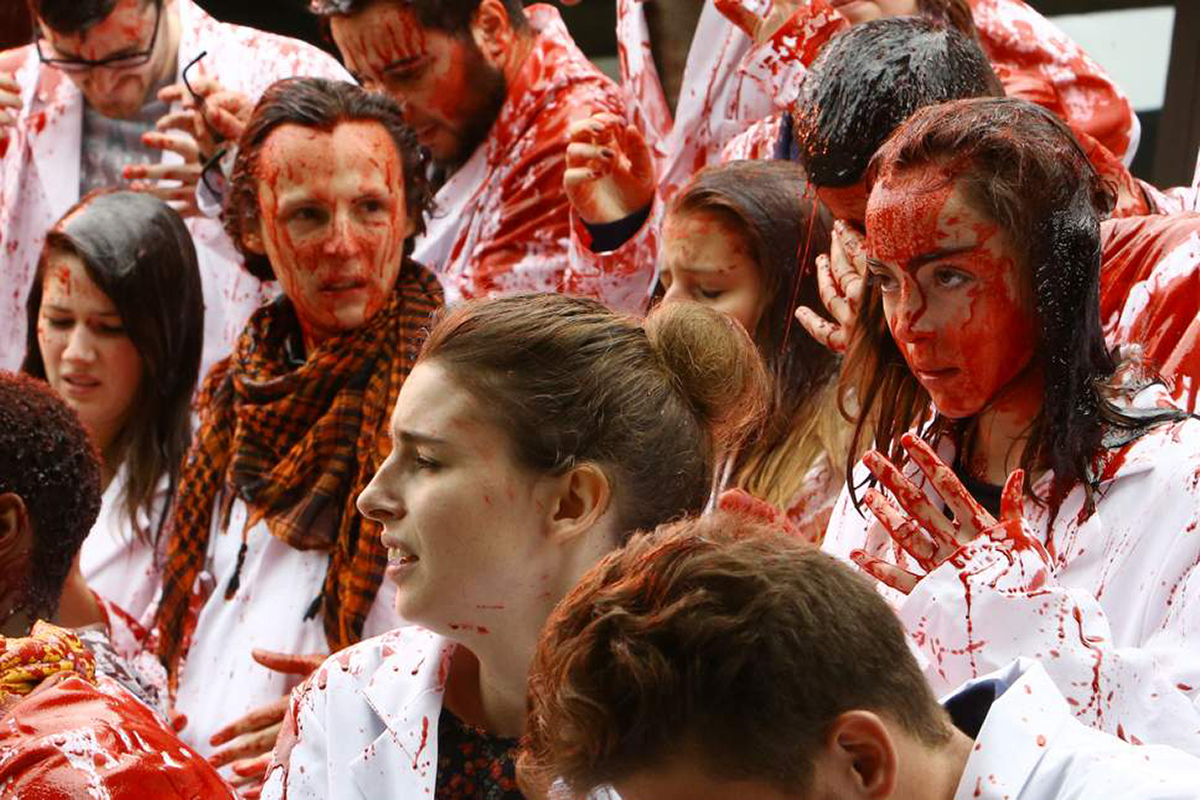
Raw (2016)
I had the luxury of focusing my reviewing choices on striking works by women directors, like The Babadook and A Girl Walks Home, as well as Julia Ducournau’s Raw (2016) and Alice Lowe’s Prevenge (2016). I could follow the career of Australia’s definitive horror director Greg Maclean from Wolf Creek 1 and 2 to the survival thriller Jungle. And I could dwell in the dark ambiguity of less easily categorised films like Under the Skin (2013) and Personal Shopper (2016).
RealTime’s encouragement of writer individuality is evident in the way the editors have indulged and fostered this niche interest of mine with characteristic humour, perspicacity and an openness to the possibility that this type of cinema might be “serious horror indeed: multilayered, rich and strange.”
–
Top image credit: The Babadook (2014)






